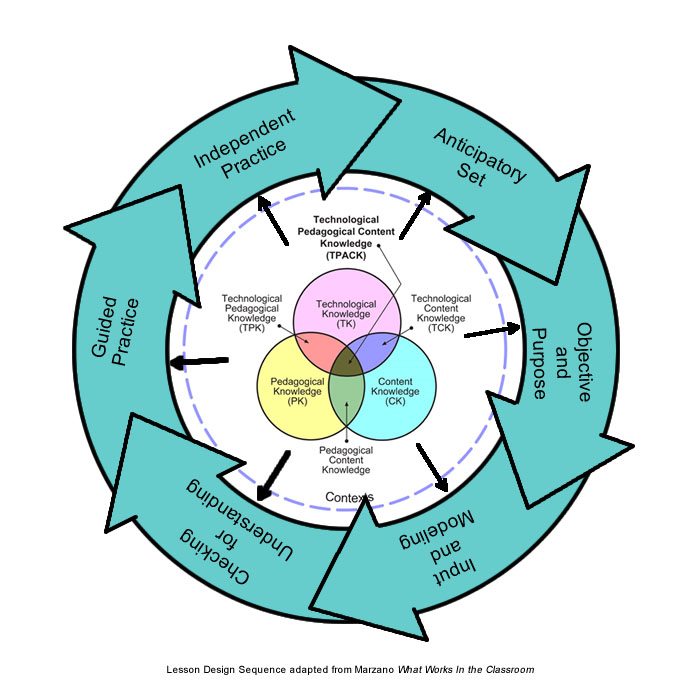
Merging Lesson Design With Pedagogical Knowledge
The basic lesson design sequence for Direct Instruction–established by Madeline Hunter–includes 6 fundamental steps:
1. Anticipatory Set
2. Objective & Purpose
3. Input & Modeling
4. Checking for Understanding
5. Guided Practice
6. Independent Practice
The sequence closely follows the gradual release of responsibility model (show me, help me, let me), and has been used as the basic template for schools for decades.
Adding The Component Of Teacher Knowledge Domains
In What Works In The Classroom, Robert Marzano added an interesting component to this lesson planning model, integrating the kinds of knowledge teachers would ideally have to design instruction. These domains remain classic educator fare–pedagogical knowledge, content knowledge, and technological knowledge.
More importantly, however, are the areas of overlap included in the triple Venn diagram that mark where these knowledge and expertise domains converge. Note the non-linear sequence below:
1. Technological Knowledge (TK)
2. Content Knowledge (CK)
3. Pedagogical Knowledge (PK)
4. Technological Content Knowledge (TCK)
5. Technological Pedagogical Knowledge (TPK)
6. Technological Pedagogical Content Knowledge (TPCK)
The Takeaway
The main takeaway here for most teachers–beyond the reflection on the increasingly convergent practice of “teaching” in the 21st century–might be to see how each relate to the lesson design sequence itself.
Content Knowledge relates strongly to “Input & Modeling,” while Technological Pedagogical Content Knowledge (TPCK) relate to both the Independent Practice portion, as well as the Anticipatory Set.

